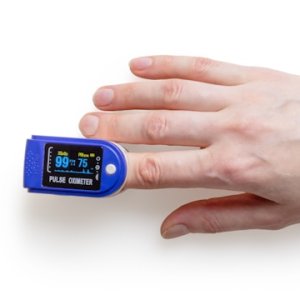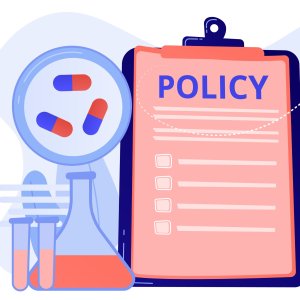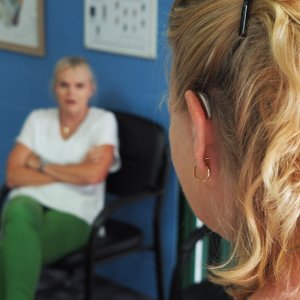
Boosting Growth Through Simplified Regulation
To ensure continued industry growth, particularly in medical devices and pharmaceuticals, a clear and simplified regulatory environment is essential. The same rules that govern the industry must also guarantee the safety of the population. COFEPRIS is aware of the challenges and is taking steps to address them.
The regulatory environment in Mexico faces internal and external challenges due to the country’s epidemiological transition, the renegotiation of NAFTA, the CPTPP and a new presidential administration to be inaugurated in December for a six-year term. Amid this abundance of uncertainty, it is imperative that COFEPRIS helps to create a predictable and stable environment for doing business in Mexico, says Julio Sánchez y Tépoz, Federal Commissioner at COFEPRIS.
Sánchez y Tépoz cites three areas in particular for achieving a credible environment for business: “The first is to guarantee access. The second is to regulate the evolution of technology used for both medicines and medical devices. The third challenge is to maintain an active and close communication to generate prevention schemes for common diseases like obesity.”
To better achieve these ends, part of the solution – and a contributor to the industry’s growth – is the increased participation of authorized third parties to alleviate COFEPRIS’ workload and grant a better regulatory balance. According to COFEPRIS, an authorized third-party is a nationally recognized agent in the field of health risks that is subject to sanitary control for all export and import products, as well as being the only entities that can legally support the regulatory authority. COFEPRIS has three types of third-party authorizations divided into units of interchangeability of medicines or bio-comparability tests of biotechnological medicines, test laboratories for assistants in sanitary control and verification units for the sanitary control of medicines, establishments and medical devices.
Authorized third parties are intermediaries between the private sector and the authorities because through their services they simplify COFEPRIS’ regulatory processes and at the same time channel the needs of companies in the health sector. “This synchronization would improve registration processes and would accelerate the growth of the industry, especially for foreign companies,” says Octavio Vial, Director General of TESIS.
Eventually, the evolution of the health sector and the regulatory authorities will shape the support provided by third parties in the regulatory environment. Today, they are
key to streamlining the services provided by COFEPRIS, but tomorrow these institutions could be professionalized to compete with each other, along with an administrative simplification that significantly improves regulatory processes, says Javier Cortés, Partner at Jones Day.
MEDICAL DEVICES
The medical devices segment is among the areas that would greatly benefit from regulatory simplification, a benefit that ultimately would pass on to the patient. Since 2008, the medical devices market has grown steadily through the more than 130 companies that are members of the seven clusters in Chihuahua, Tamaulipas, Mexico City, State of Mexico, Nuevo Leon, Morelos and Baja California, which is the most important cluster with more than 50 percent of the sector’s total national exports, according to ProMéxico. Mexico is considered the largest market in Latin America and is ranked eighth for global exports of medical devices, with production exceeding US$15.2 billion, according to COFEPRIS.
In the last decade, Mexico has become a world leader in the manufacture and assembly of medical devices, so the challenge is not the availability of medical devices in the country, but in the population’s access to these devices. “COFEPRIS’ regulations should not be seen as a barrier as they are necessary to guarantee the safety and quality of medical devices used in Mexico. The challenge to introducing medical devices into the Mexican public sector comes from the different processes undertaken by each institution to approve a product. After a product is approved by CONACYT, it still takes up to one year for its introduction into the General Health Council’s basic list, followed by another year at IMSS, ISSSTE or any other public institution,” says Roger Brownrigg, General Manager of Johnson & Johnson.
In 2017 alone, more than 18,000 procedures for the authorization of medical devices were deregulated and registered. In addition, the regulatory authority, through the Administrative Procedures Platform registered 19,694 medical devices, where 30 percent were subject to the opinion of authorized third parties. Today, COFEPRIS has 19 verification units to support the regulatory process of medical devices.
PHARMACEUTICALS
Over the years, COFEPRIS has strengthened to become a reference for other countries in the Latin American region. “Mexico is already a leader in the regulation of medicines in Latin America and it can become a regulatory leader in other areas, such as biomedicine,” says Abel Hernández, Director General of ANCE. However, improvements must continue to guarantee access to quality medicines. The period required to register a product is among the industry’s concerns, as well as the ability of COFEPRIS to keep up with innovations, a vital issue to ensure access to these products. As innovations arrive to the market “the regulatory gap will need to be filled as the demand for these technologies grows,” says Jaime Castro, Director General of BPF, Part of QbD Group. If these demands are not fulfilled on time, he continues, “we might find that regulations are almost dead on arrival because as they are released another technology is emerging.”
The speed of the regulatory process is not the only concern, since in parallel the industry demands that COFEPRIS align with the innovations of the market. “COFEPRIS is working hard to keep pace through close communication with technology developers. At this moment, there is no regulation related to nanomedicine, so one of the objectives should be to discuss strategies to create related regulations,” says Yoloxóchitl Macías, Chief of Health Area at ANCE. In this context, having an updated regulatory agency is key to guarantee access to innovative medicines.
Regarding the generics segment, the areas requiring improvement are in promoting a positive business environment between both the generics and patent companies. “Authorities such as IMPI and COFEPRIS should consider the conditions of the market and the impact of the generics segment to promote greater associations between these two players,” says Benjamín Vega, Commercial Director of Allen Laboratorios. On the other hand, for Big Pharma companies the concern focuses on registration procedures. “Besides the big changes already done, the health authorities could accelerate regulatory processes while maintaining the firmness of their assessments to attract more investment,” explains Marco Ruggiero, General Manager of Chiesi México.
OPPORTUNITIES
The OECD emphasizes that future inclusive growth, fair competition and good regulation of the health sector in Mexico requires the establishment of a high-quality regulatory framework and stronger competition. It also notes that “Mexico does not only need clear rules but also strong, competent, independent and transparent regulators who can assure market participants that regulation will be applied objectively and impartially.”
Over the next few years, the regulatory authorities need to meet several milestones to continue with the development and strengthening of the medical devices and pharmaceutical sectors in Mexico. “It is necessary to accelerate and unify the sanitary requirements between Mexico and the US. Mexico should expedite the procedures to adhere to international laws that provide access to more modern medical devices and drugs. COFEPRIS must rely on the verification and authorization capacity of other countries and recognize the lack of budget and capacity to carry out international inspections,” says Cortés.
On a national scale, there are public-private collaboration schemes or other business schemes that address the overloaded public health system and its complementary services. “The opportunities are in the creation of new payment schemes, like payment based on results. In the public sector, opportunities will revolve around innovative patient-focused access models that help the public sphere maximize resources and acquire the necessary innovation to provide medical care to the population for which they are responsible,” explains José Alarcón, Dean Partner of Healthcare at PwC. “In the case of the private sector, the opportunities are in making supply chains efficient and with profitable prices for new players.”
The regulatory system has not seen a substantial update in more than 20 years so the next administration should prioritize the improvement of greater legal security and promote greater investment in the country to increase the possibility of local companies competing with their international counterparts, says Alejandro Luna, Partner and Life Science Co-Chair at Olivares.
















